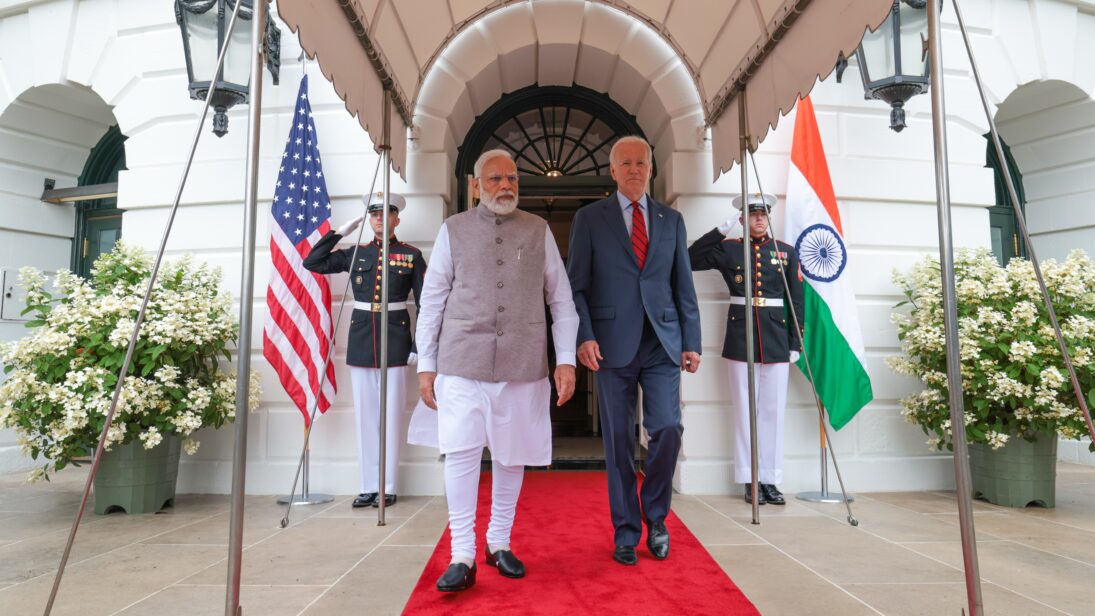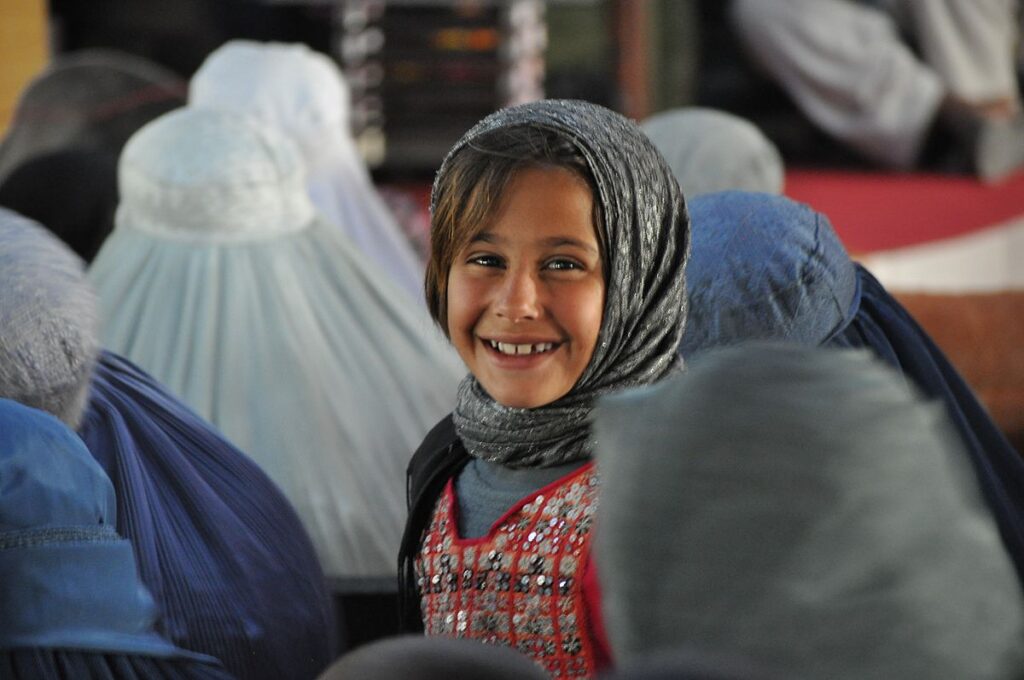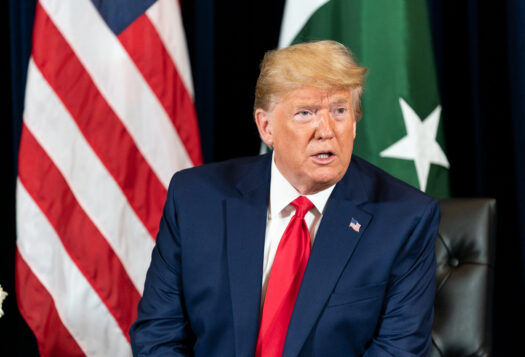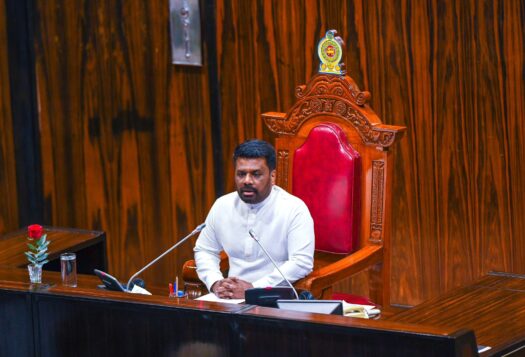
On June 21, Indian Prime Minister Narendra Modi arrived in the United States on his first official state visit. Over a very productive two days, Prime Minister Modi spoke to both houses of the U.S. Congress, met with President Joe Biden, and attended a banquet that was arranged in his honor. At the end of the visit, India and the United States published a 58-paragraph ‘joint statement’ highlighting the various facets of their bilateral relationship, with particular emphasis on defense and military cooperation. Notably, the joint statement focused considerably on various facets of regional stability that go beyond the U.S.-India bilateral relationship. However, while the visit and joint statement addressed terrorism in Pakistan and the humanitarian plight in Afghanistan, several other issues of regional stability were ignored, such as Bangladesh’s upcoming national election, the Rohingya crisis, Sri Lanka and Pakistan’s economic issues, and many more.
Biden’s approach in South Asia heavily relies on India. Echoing leaders before him, Biden said, “I’ve long believed the relationship between the United States and India … will be one of the defining relationships of the 21st century.” As the world’s most populous country and as the largest democracy in the world, India stands at the forefront of various global problems and their potential solutions. With competition intensifying between the United States and China, the Biden administration’s interest in stronger U.S.-India ties has only increased. This, for many analysts, was the main motivation for asking PM Modi on the third and final state visit of Biden’s presidential term.
Pakistan and the Terrorism Issue
Beyond the Indo-Pacific strategy, a key focus of the visit was issuing a resolute call to Pakistan, urging the nation to take decisive action against Lashkar-e-Taiba and Jaish-e-Mohammad in order to prevent terrorism in its territory. Through the discussions and joint statements, President Biden and PM Modi voiced a firm denouncement of cross-border terrorism, particularly the utilization of terrorist proxies. Furthermore, they issued a call to action directed at Pakistan, urging prompt measures to avert any territory under its jurisdiction from being employed as a launching pad for terrorist assaults. By emphasizing the importance of Pakistan’s proactive engagement in this matter in the 32nd paragraph of the statement, President Biden and PM Modi have sent a message that the international community expects nothing less than a robust and unwavering response from Pakistan in addressing this pressing concern.
A key focus of the visit was issuing a resolute call to Pakistan, urging the nation to take decisive action against Lashkar-e-Taiba and Jaish-e-Mohammad in order to prevent terrorism in its territory.
They also emphasized the importance of a unified and coordinated response in addressing the multifaceted threat posed by groups such as Al-Qaida, Daesh, and Hizb-ul-Mujhahideen that have been officially designated as terrorists by the United Nations. The leaders also accentuated the need to bring those responsible for the assaults to justice, citing the 2008 Mumbai assault in which over 165 people were killed and the Pathankot bombings as examples. The Pakistani government did not respond positively, and the country’s foreign ministry summoned the United States Embassy’s Deputy Head of Mission. The ministry expressed strong disapproval of the joint statement, marking it as “unwarranted, one-sided, misleading, and contrary to diplomatic norms.”
However, under Prime Minister Modi’s leadership, India has shifted towards a more assertive stance with Pakistan, evident in its 2019 response to a Kashmiri suicide attack that killed 40 Indian soldiers. Despite Pakistan’s vehement denial and claims of a “false flag” operation, India swiftly retaliated to address security concerns. This hardline response signals an evolution in India-Pakistan dynamics, allowing Modi to tackle threats from Pakistan while straining U.S.-Pakistan relations.
Afghanistan’s Humanitarian Plight
In the context of the present humanitarian plight in Afghanistan, it is noteworthy that both President Biden and Prime Minister Modi expressed a shared consensus regarding the necessity of ensuring continuous and unhindered delivery of immediate assistance to the Afghan populace. Per the statement, the leaders have stressed their unwavering commitment to fostering an environment of peace, safety, and steadfastness in Afghanistan. In addition to their previous statements, they repeatedly stressed the need for the Taliban to adhere to the provisions outlined in United Nations Security Council Resolution 2593. This resolution explicitly calls for the prevention of Afghan territory from being utilized as a base for the purpose of posing threats or launching attacks against any nation, providing refuge or training to terrorists, or orchestrating and funding acts of terrorism. They also urged to establish a comprehensive political framework, asking the Taliban to uphold the fundamental rights of all Afghan citizens, including women and girls.

Gaps in the Joint Statement
The joint statement, unfortunately, allocated a mere fraction of its content to the ongoing crisis in Myanmar. Both prominent figures conveyed their profound apprehension regarding the escalating circumstances, voicing “deep concern about the deteriorating situation in Myanmar”. Both Modi and Biden have made a resolute demand for the immediate release of all individuals who have been detained without just cause. Furthermore, they have advocated for the initiation of a productive and meaningful dialogue, as well as the transformation of Myanmar into a system that embraces inclusivity and upholds the principles of a federal democracy.
However, upon careful examination, it is evident that the section of the joint statement on Myanmar and the Rohingya crisis exhibits a remarkable level of generality and moderation. The conspicuous absence of any reference to the Myanmar military government and its ongoing perpetration of crimes regarding the Rohingya is a notable aspect of the discourse at hand. Furthermore, the significant displacement of over one million Rohingyas, who have been forcibly expelled from their homeland, was merely glossed over. The absence of any mention of the safe repatriation of Rohingyas to their home country questions the inclusivity and priorities of the summit and the underlying political narrative. The failure to address this issue not only disregards the plight of the Rohingyas but also neglects the broader implications for regional stability and human rights.
Upon careful examination, it is evident that the section of the joint statement on Myanmar and the Rohingya crisis exhibits a remarkable level of generality and moderation.
Finally, it is significant to note that the discourse surrounding ‘South Asia’ was relatively limited, confined to a mere mention in paragraphs 28 and 32. While the joint statement mentioned the importance of regional stability and platforms like the Indian Ocean Dialogue, it put a significantly higher priority on the Indo-Pacific region compared to South Asia as a whole. As anticipated, conspicuous indications of resistance towards China were evident. It was discernible that China or related aspects would get more spotlight than some South-Asian themes—the next national election of Bangladesh, the Rohingya crisis, and the politico-economic instabilities in Pakistan and Sri Lanka—that could have made the visit more fruitful as a whole from the South Asian perspective.
Also Read: Significance of Prime Minister Modi’s State Visit
***
Click here to read this article in Urdu.
Image 1: India-US Hi-Tech Handshake event in White House via Flickr
Image 2: A young girl pictured on International Womens Day in Afghanistan via Wikimedia Commons


